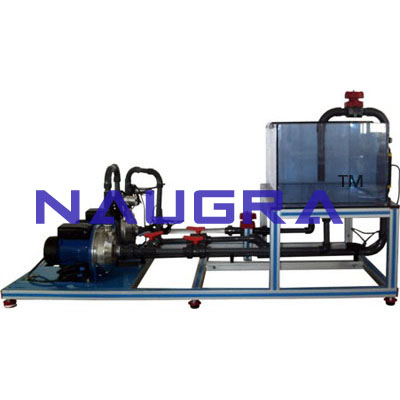- Civil Lab Mechanical Lab Engineering Lab Equipments
- sales@didacticlabequipments.com

CAT NO: DIDACTICNLE-Export-205098
EXERCISES AND PRACTICAL POSSIBILITIES
Some Practical Possibilities of the Unit:
1.-Demonstration of a gear pump in operation.
2.-Obtaining of curves H(Q), N(Q), Efficiency (Q) of the gear pump.
3.-Simultaneous representation of H(Q), N(Q) and Efficiency (Q).
4.-Adimensional study of magnitudes H*, N* and Q*.
5.-Determination of the curve H vs Q at different r.p.m.
6.-Determination of the mechanical power vs flow at different r.p.m.
7.-Determination of the efficiency curve vs the flow at different r.p.m.
8.-Determination of the map of a gear pump.
Other possible practices:
9.-Sensors Calibration.
Practices to be done by PLC Module (PLC-PI)+PLC Control Software:
10.-Control of the PBEC unit process through the control interface box without the computer.
11.-Visualization of all the sensors values used in the PBEC unit process.
12.-Calibration of all sensors included in the PBEC unit process.
13.-Hand on of all the actuators involved in the PBEC unit process.
14.-Realization of different experiments, in automatic way, without having in front the unit. (This experiment can be decided previously).
15.-Simulation of outside actions, in the cases do
not
exist hardware elements. (Example: test of complementary tanks,
complementary industrial environment to the process to be studied, etc).
16.-PLC hardware general use and manipulation.
17.-PLC process application for PBEC unit.
18.-PLC structure.
19.-PLC inputs and outputs configuration.
20.-PLC configuration possibilities.
21.-PLC program languages.
22.-PLC different programming standard languages.
23.-New configuration and development of new process.
24.-Hand on an established process.
25.-To visualize and see the results and to make comparisons with the PBEC unit process.
26.-Possibility of creating new process in relation with the PBEC unit.
27.-PLC Programming Exercises.
28.-Own PLC applications in accordance with teacher and student requirements. Fluid Mechanics Lab Equipments manufacturers